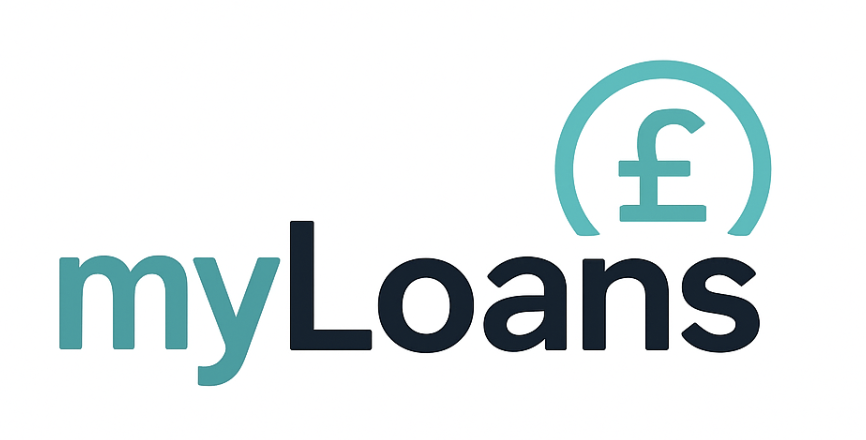Table of Contents
Introduction: Why Moving House Is So Expensive
Whether you’re upsizing, downsizing, or relocating for work, moving house in the UK is rarely cheap. Beyond the obvious costs like deposits and mortgages, households face:
-
Estate agent and solicitor fees
-
Stamp duty (where applicable)
-
Removal services and storage
-
Cleaning, redecorating, and furnishing
-
Travel and temporary accommodation
Combined, these expenses can run into the thousands. For many, savings fall short — which is why moving house loans have become a practical option to spread relocation costs.
This guide explains everything you need to know about moving house loans in the UK in 2025: what they are, who offers them, how much you can borrow, the pros and cons, and alternatives.
What Is a Moving House Loan?
A moving house loan is simply a personal loan used to cover relocation expenses. It’s not a unique financial product, but lenders allow borrowing for purposes such as:
-
Covering moving company costs
-
Paying rental deposits or bridging gaps between tenancies
-
Buying new furniture or appliances
-
Covering legal or admin fees
How Do Moving House Loans Work?
-
Apply: Through a bank, online lender, or credit union.
-
Approval: Based on credit score, income, and affordability.
-
Funding: Money is paid into your account.
-
Repayments: Fixed monthly instalments over 1–7 years.
Example:
-
£5,000 moving loan at 9.9% APR over 3 years = ~£161/month, £5,796 total repayable.
Typical Loan Amounts and Rates
-
Loan amounts: £1,000–£25,000 unsecured (more if secured).
-
Repayment terms: 1–7 years.
-
Rates:
-
Good credit: 6%–10% APR
-
Average credit: 12%–20% APR
-
Poor credit: 20%–49% APR
-
Who Offers Moving House Loans in the UK?
-
High Street Banks – Tesco, M&S, Nationwide, Lloyds, TSB
-
Online Lenders – Zopa, Lendable, Admiral, Likely Loans
-
Credit Unions – Community-based, often more affordable
-
Guarantor Loans – For applicants with poor credit
Pros and Cons of Moving House Loans
Pros
-
Immediate access to funds for essential relocation costs
-
Fixed repayments help manage cashflow during a stressful time
-
Can cover unexpected expenses (storage, legal fees, repairs)
-
May be cheaper than using credit cards long-term
Cons
-
Adds debt at a time when finances are already stretched
-
Interest increases total cost of moving
-
Bad credit = higher APRs
-
Some lenders may restrict use of loans for deposits
Alternatives to Moving House Loans
-
Savings: Cheapest option if available.
-
Bridging Loans: Short-term, property-backed finance (riskier, often expensive).
-
0% Credit Cards: For smaller, manageable costs.
-
Overdrafts: Useful short-term, but costly if prolonged.
-
Employer relocation packages: Often available if moving for work.
How to Budget for Moving House
-
Get quotes from removal firms early.
-
Account for hidden costs (packing supplies, cleaners, storage).
-
Budget for post-move expenses (new bills, décor, furniture).
-
Borrow only what you need — avoid long terms for short-term costs.
-
Check affordability before applying.
Worked Examples
Example 1 – Local Move (Renting)
-
£2,000 for deposits + moving services
-
Loan: £2,000 at 12% APR over 2 years = ~£94/month
-
Total repayable ~£2,256
Example 2 – Family Move (Buying)
-
£7,500 in solicitor, stamp duty, removals
-
Loan: £7,500 at 9.9% APR over 5 years = ~£159/month
-
Total repayable ~£9,540
Example 3 – Long-Distance Relocation
-
£10,000 needed for removals, storage, temporary accommodation
-
Loan: £10,000 at 8.9% APR over 5 years = ~£207/month
-
Total repayable ~£12,420
FAQs
Q: Can I use a personal loan for rental deposits?
Yes, but some landlords prefer deposit schemes. Always check first.
Q: Are moving loans different from personal loans?
No — they’re just personal loans used for relocation.
Q: Can I get a moving loan with bad credit?
Yes, but interest rates will be higher. Credit unions may be a better option.
Q: Is it better to use a credit card?
For small costs and Section 75 protection, yes. For larger costs, personal loans are usually cheaper.
Conclusion: Move Without Money Stress
Moving house is one of the most stressful life events, made worse by unexpected expenses. A moving house loan can provide breathing room, letting you cover deposits, removals, and other costs without draining savings.
But remember: borrowing adds to your commitments at a time when your budget may already be stretched. The smartest move is to compare lenders, borrow only what you need, and choose a repayment term that matches your affordability.
Handled responsibly, a moving house loan can turn a chaotic relocation into a smoother transition.
Personal Loan Debt Consolidation UK – Is It Right for You?
Juggling multiple credit cards, overdrafts, or loans can be stressful and expensive. A debt consolidation loan allows you to combine everything into a single monthly repayment, often at a lower interest rate. In 2025, UK lenders from high street banks to online...
Emergency Loans UK – How to Borrow Fast in 2025
When an urgent expense hits — like car repairs, medical bills, or a broken boiler — quick access to funds can be essential. In 2025, emergency loans in the UK provide a way to borrow fast, with some lenders offering same-day decisions and payouts. This guide explains...
Top 10 Personal Loan Providers UK 2025 – Rates, Features & Eligibility
The UK personal loan market in 2025 offers more choice than ever, with banks, supermarkets, online lenders, and credit unions all competing for borrowers. The best deal for you depends on your credit score, loan size, and repayment term — but comparing providers side...
Best Debt Consolidation Loans UK 2025 | Top Options
Managing multiple debts can feel overwhelming, especially with credit cards, overdrafts, and personal loans all charging different interest rates. A debt consolidation loan can simplify your finances by rolling everything into one fixed monthly repayment — often at a...
Best Bad Credit Loans UK 2025 – Top Lenders Compared
Having a poor credit score, CCJs, or past defaults doesn’t mean borrowing is out of reach. In 2025, several UK lenders specialise in products designed for people with bad credit — offering smaller loans, flexible repayment terms, and eligibility checks that won’t harm...
Home Repair Loans UK – How to Cover Unexpected Costs in 2025
A leaking roof, broken boiler, or urgent plumbing issue can quickly turn into an expensive problem — often when savings aren’t available. In 2025, home repair loans in the UK provide a way to spread the cost of essential fixes into manageable monthly repayments. This...
Green Energy Loans UK – How to Finance Eco-Friendly Home Improvements in 2025
Eco-friendly upgrades such as solar panels, insulation, heat pumps, and EV chargers can cut energy bills and boost property value — but they require a significant upfront investment. In 2025, green energy loans in the UK provide a way to spread the cost of sustainable...
Education Loans UK – How to Fund Studies and Professional Courses in 2025
Not all education in the UK is covered by government student finance. Postgraduate degrees, professional qualifications, and private training often require self-funding — with tuition fees and course costs running into thousands of pounds. In 2025, education loans in...
Holiday Loans UK – How to Spread the Cost of Travel in 2025
Holidays can be some of the most rewarding experiences of the year, but they often come with a price tag that’s hard to cover upfront. From flights and hotels to all-inclusive packages and once-in-a-lifetime trips, the costs can add up quickly. In 2025, holiday loans...
Best Personal Loans UK 2025 – Top Lenders Compared
The UK personal loan market in 2025 is more competitive than ever, with high street banks, supermarkets, online lenders, and credit unions all offering products to suit different needs. Choosing the right provider can save you hundreds in interest and ensure...
Medical Loans UK – How to Finance Healthcare Costs in 2025
While the NHS covers most essential treatment, waiting lists, private care, and specialist procedures mean many people face out-of-pocket medical expenses. From dental work and fertility treatment to cosmetic surgery and urgent private healthcare, costs can run into...
Car Loans UK – Personal Loan vs Hire Purchase vs PCP in 2025
Buying a car in 2025 usually means more than just choosing the right vehicle — it also means deciding how to pay for it. In the UK, the three main options are a personal loan, hire purchase (HP), or personal contract purchase (PCP). Each has its own advantages,...
Home Improvement Loans UK – How to Finance Renovations in 2025
Planning a new kitchen, loft conversion, or energy-efficient upgrade can transform your home’s value and comfort — but the upfront costs are often daunting. In 2025, home improvement loans in the UK provide a way to spread renovation expenses into affordable monthly...
Bad Credit Personal Loans UK 2025 | Complete Borrowing Guide
Defaults, CCJs, or missed payments don’t have to shut you out of borrowing. In 2025, UK lenders still offer options for people with less-than-perfect credit — from credit unions and guarantor providers to online specialists. This guide explains how bad credit personal...
How to Use a Personal Loan Calculator to Plan Your Borrowing
A personal loan calculator is one of the easiest ways to understand what a loan will really cost you. By entering the amount you want to borrow, the interest rate, and the repayment term, you can see your monthly repayments and the total cost over time. This simple...

















